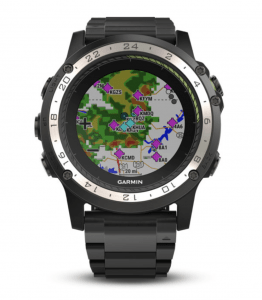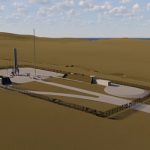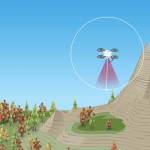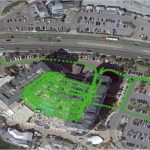Three different low-cost sensor integrations, covering vehicle navigation in a range of environments, will be covered in a February 12 webinar, “Automotive-Grade GNSS + Inertial for Robust Navigation.”
U2: BeiDou Is My Co-pilot
According to a statement by the head of U.S. Air Force Air Combat Command, pilots of the elite U-2 spy plane wear watches that receive foreign GNSS signals and provide backup navigation when GPS is jammed.
“My U-2 guys fly with a watch now that ties into GPS, but also BeiDou and the Russian [GLONASS] system and the European [Galileo] system so that if somebody jams GPS, they still get the others,” said Gen. James “Mike” Holmes on March 4 at the McAleese Defense Programs Conference in Washington.
The Lockheed U-2, nicknamed “Dragon Lady,” is a single-jet engine, ultra-high altitude (70,000 feet, 21,300 meters) reconnaissance aircraft. It gathers intelligence with a variety of sensors. The U-2 is one of very few aircraft that have served the Air Force for more than 50 years, a select group that also includes the B-52 long-range bomber. The latest model, the U-2S, had a technical upgrade in 2012. [Dragon Lady photo above, courtesy Lockheed.]
Gen. Holmes did not name the watch manufacturer.
In February 2018, Garmin announced that its D2 Charlie aviator watch had been selected by the Air Force for use by the pilots of the Lockheed U-2 aircraft. “The high-sensitivity WAAS GPS-enabled D2 Charlie aviator watch incorporates global navigation capability, rich and colorful moving maps and more, providing pilots in the USAF with an exclusive, back-up navigation timepiece in the cockpit. . . . The D2 Charlie aviator watch will be an integral and functional part of the U-2 pilot’s toolkit.”
According to the press release, Garmin expected the United States Air Force to take delivery of more than 100 D2 Charlies.
Among the sensors mentioned on Garmin’s spec sheet for the watch are GPS, GLONASS, a heart rate monitor, barometric altimeter, compass, accelerometer and thermometer. BeiDou is not listed.
However, in an annual report filed with the Securities and Exchange Commission, the company stated: “Garmin utilizes a variety of other global navigation satellite systems (GNSS) including, but not limited to . . . .The BeiDou Navigation Satellite System (BDS), a Chinese satellite navigation system that is expected to have 35 operating satellites in orbit by 2020 and will provide global coverage.”

D2 Charlie has a sapphire scratch-resistant crystal lens and a diamond-like carbon (DLC) coated titanium bezel. A sunlight-readable, high-resolution color display with LED backlight on the watch face allows pilots to view data in most lighting conditions in the cockpit. It offers up to 20 hours of battery life in GPS mode and up to 12 days in smartwatch mode. It comes with a leather wristband and a sporty silicone band.
By Inside GNSS













